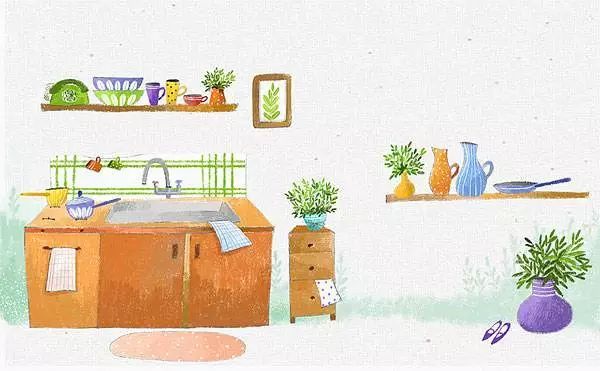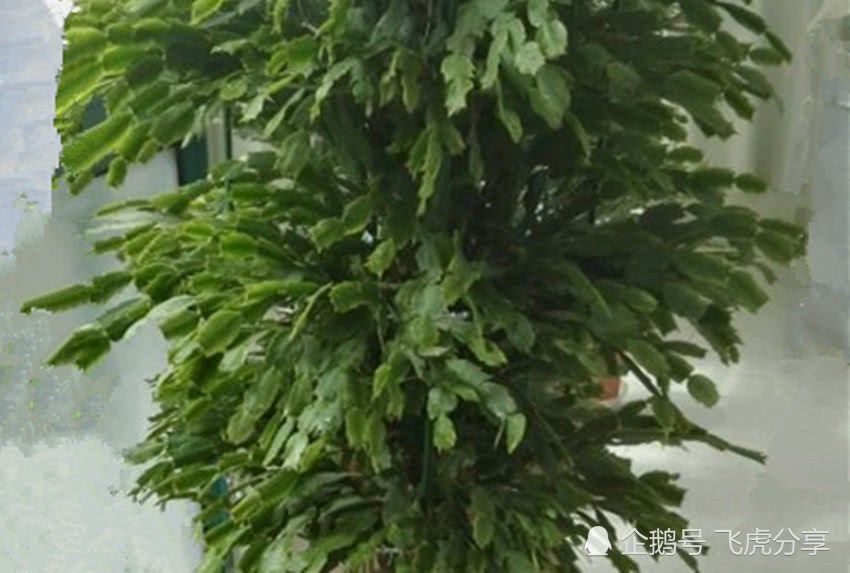What kind of trees are planted in the courtyard?

Ancient fengshui thought that planting flowers and trees in the courtyard had the function of "hiding water from the wind, accompanying the cute local vein, dispelling bad spirits, increasing prosperity and good fortune". This is why although the Chinese classical garden is small, it is full of shade and fragrant flowers and trees.
No matter which type of courtyard you want to enjoy the cool in summer, the leaves in autumn and the branches in winter, there are all kinds of unique landscape trees. So which landscape trees are most suitable for planting in the courtyard? Let's take a look at this together with Drum:
0
1
Flower viewing and leaf appreciation type
① ginkgo
Ginkgo biloba has a long life and benefits from one planting for a long time, so land selection is very important. Ginkgo biloba is a light-loving tree species, so we should choose a sunny slope with a small slope. The requirements of soil conditions are not strict, neutral or slightly acidic soil with moist and fertile soil and good drainage is better.
Ecological value:
It can not only provide a large number of high-quality wood, leaves and seeds, but also green the environment, purify the air, conserve soil and water, control insect pests, adjust temperature, adjust psychology and so on. It is a good afforestation, greening and ornamental tree species.
Ornamental value:
Because the ginkgo tree has a long life, it has become a symbol of health and longevity, happiness and auspiciousness, and the strange shape of its leaves is regarded as a "symbol of harmony". It implies the harmonious characteristics of the unity of opposites of all things, such as "one and two", "yin and yang", "life and death", "spring and autumn" and so on.
② Sophora japonica
As the saying goes, "there is a locust in front of the door, get promoted and get rich." Although this is a superstition, but the ancients for a good fortune, whether they are officials and eunuchs, or ordinary families, there are always locust trees near the courtyard. From the perspective of planting history, the locust tree has been one of the earliest greening tree species selected by the government as early as the pre-Qin period.
Morphological features:
Trees, flowering from June to July, fruiting from August to October
Ornamental value:
Robinia pseudoacacia is a commonly used characteristic tree species in the courtyard, its branches and leaves are dense, shade like cover, suitable for shade tree, locust tree wood is hard, can be greening tree, street tree, etc., it is considered to represent "Lu" in fengshui. The ancient court planted three locust trees and nine thorns, and the princes and officials sat under them, facing the three locust trees, so the locust tree has the highest grade among the trees, and the town house has authority.
③ palm
Also known as the palm tree. It not only has ornamental value, but also can be used as pavilions, brown hair can be used as medicine, the function is astringent hemostasis, the main treatment of hematemesis, metrorrhagia and other diseases, in fengshui has the role of making money and protecting money.
Palm like warm and humid climate, extremely cold-resistant, more shade-resistant, the finished product is extremely drought-resistant, but can not withstand too large temperature difference between day and night. Suitable for good drainage, moist and fertile neutral, calcareous or slightly acidic soil, resistant to light salt and alkali, but also resistant to drought and moisture.
④ cinnamon
In ancient Chinese poetry, there is "Guizi falling in the moon and fragrant clouds floating out of the sky", which means that during the Mid-Autumn Festival, sweet-scented osmanthus will fall from the moon, and sweet-scented osmanthus has become a symbol of the connection between the moon and the world, so as long as the family can have its own courtyard, it will be planted with sweet-scented osmanthus trees.
⑤ Magnolia
Morphological features:
A variety of magnolia with white flowers. Deciduous tree, Shanghai city flower, flowering from April to September, blooming in summer.
Growth habits:
Suitable for growing in warm and humid climate and fertile loose soil, like light. I can't stand the drought.
Ornamental value:
As a valuable ornamental tree in the garden, it symbolizes a pioneering and enterprising spirit.
⑥ purple magnolia
Magnolia is a magnolia genus of Magnoliaceae, also known as Magnolia, Magnolia, is a kind of plant endemic to China, with beautiful flowers, elegant fragrance, isolated or cluster planting, graceful tree shape and luxuriant flowers, which is very suitable for ornamental.
Growth habits:
Like warm, humid and sunny environment, more cold-resistant, but not resistant to drought and salinity, afraid of flooding, requires fertile, well-drained sandy loam.
⑦ Begonia
Begonia, sexual like the sun, but also can withstand semi-shade, cold resistance, environmental requirements are not strict, suitable for loose and fertile, deep soil, good drainage sandy soil growth.
Morphological features:
Trees, flowering April-May, fruiting August-September.
Ornamental value:
Flowers bloom brightly, making the house full of wealth, known as "immortals in flowers" and "flower imperial concubines", while the flower of Tangdi symbolizes brotherly harmony and happiness.
⑧ plum tree
Plum blossom, one of China's national flowers, is famous for its holiness, boldness, elegance and fragrance. Through the ages, I do not know how many scholars and poets have splashed ink on it, and many masterpieces have been praised through the ages.
Morphological features:
Small tree, flowering from December to March and fruiting from May to June
Ornamental value:
The plum tree has strong adaptability to the soil, blooming five petals, noble and noble, its five petals have the meaning of plum blossom and five blessings, which plays a role in promoting the happiness of the home.
0
two
Modeling landscape tree
one
Luo Hansong
In Chinese traditional culture, Luo Han Song symbolizes longevity, wealth and auspiciousness. In Guangdong, there is a folk saying that "if you have Luo Han Song at home, you will not be poor for all generations". Ancient Chinese officials also liked to plant lohan pine in the courtyard and regarded it as the patron saint of their official position.
Morphological features:
Evergreen coniferous trees, flowering from April to May, seeds mature from August to September, cultivated in the garden as ornamental trees, like warm and humid climate, weak cold tolerance, strong shade tolerance.
Ornamental value:
In traditional Chinese culture, Luo Han Song symbolizes longevity, wealth, town and auspiciousness. In Guangdong, there is a folk saying that "if you have Luo Han Song at home, you will not be poor for all generations". Ancient Chinese officials also liked to plant lohan pine in the courtyard and regarded it as the patron saint of their official position.
② five-needle pine
The five-needle pine has a good posture and is a tree species with high ornamental value, which is not only suitable for garden decoration, but also an important tree species for potted plants or bonsai; in order to maintain a good tree posture, control the growth of branches and leaves, and achieve the shape of short, dense and vigorous branches and leaves, it must be shaped and pruned frequently.
Morphological features:
Evergreen coniferous trees of Pinaceae, flowering in May and maturing from October to November of the following year.
Growth habits:
Like the warm and humid environment, light-loving tree species, high requirements for light, planting soil can not accumulate water, drainage and air permeability is good.
③ modeling banyan tree
Banyan tree is a very common tree, its tall shape, full and dense branches and leaves, often planted as a landscape tree in parks, courtyards and other places.
Morphological features:
Arbor, flowering from May to June, the banyan tree has strong adaptability and can take root in the moist air, which greatly improves the ornamental value and likes sufficient sunshine.
Ornamental value:
Contains the meaning of "tolerance is great, no desire is rigid" meaning, the resident of self-encouragement will help to improve self-cultivation.
0
three
Flowers and fruit trees
one
Pomegranate
Chinese people have always liked happy scenes, and pomegranate symbolizes the kind of prosperous and happy life that Chinese people hope for. Anyone who has seen pomegranate flowers knows that pomegranate flowers are as colorful as fire, warm and gorgeous, and the branches of pomegranate flowers symbolize a prosperous, beautiful and prosperous day.
Morphological features:
Small trees, evergreen in the tropics, flowering from May to June and fruiting from September to October.
Ornamental value:
The Chinese regard pomegranate as a mascot, containing the auspicious sign of many children and many blessings, with a rich and noble atmosphere.
② persimmon
Persimmon trees are graceful with dark green and glossy leaves, red leaves in autumn, numerous fruits and not easy to fall off, so they are excellent fruit trees and ornamental trees.
Morphological features:
A deciduous tree of the family Persimmon whose trunk is erect and its crown is large and graceful. The leaves of persimmon turn red by frost in autumn and are very beautiful. Persimmon ripens from September to October.
Growth habits:
It has the characteristics of drought resistance, moisture tolerance, early fruit, high yield, long life and so on.
③ orange tree
"tangerine" and "auspicious" are homophonic, symbolizing auspiciousness, and the fruit is red and yellow in color. Potted tangerine is an important decoration for people's families during the Spring Festival, while orange leaves have the function of soothing the liver and relieving depression, which can bring joy to the family.
Growth habits:
Orange likes sunshine and warm, humid environment, is not cold-resistant, slightly shade-resistant, drought-resistant, requires fertile, loose, slightly acidic sandy loam with good drainage.
Ornamental value:
That is, orange tree, "orange" and "auspicious" homonym, symbolizing auspiciousness. The fruit is orange-red or orange-yellow, representing enthusiasm and joy.
④ loquat
Morphological features:
Evergreen trees, flowering from October to December and fruiting from May to June
Growth habits:
It is native to the subtropics and requires a higher temperature, and the annual average temperature can grow normally when the annual average temperature is more than 12 ℃. The sun-loving tree species of landscaping have no high requirements for drought tolerance, and it is better to be fertile soil.
If you also like growing flowers, follow us!
- Prev

Two apples and one dragon fruit are easy to do without fat on the waist. Younger women like it.
If you want to see whether a middle-aged woman has a happy family and a happy life, you only need to see two points. First, look at her face. Happy women tend to have a ruddy complexion, bright skin, full of qi and blood, comfortable expression and no bitterness. ...
- Next

The stem of crab claw orchid is soft and simple to make three-point stem piece firm and full of green flowers.
Now it has entered the autumn, the temperature at this time is the most suitable for the growth of crab claw orchid, but it is also the time when crab claw orchid needs nutrition and water most, because the flowering period of crab claw orchid is in winter, and it is after autumn that crab claw orchid changes from stem growth stage to...
Related
- Wuhan Hospital Iron Tree Blooming Result Was Instantly Frightened by the Gardener Master
- Which variety of camellia is the most fragrant and best? Which one do you like best?
- What is the small blue coat, the breeding methods and matters needing attention of the succulent plant
- Dormancy time and maintenance management of succulent plants during dormancy
- Minas succulent how to raise, Minas succulent plant pictures
- What are the varieties of winter succulent plants
- How to raise succulent plants in twelve rolls? let's take a look at some experience of breeding twelve rolls.
- Attention should be paid to water control for succulent plants during dormant period (winter and summer)
- Watering experience of twelve rolls of succulent plants
- Techniques for fertilizing succulent plants. An article will let you know how to fertilize succulent plants.

